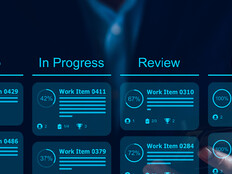How the VA Uses ITSM in Telework Environments
After the pandemic confined many federal workers to their homes, the Department of Veterans Affairs had to quickly pivot to handle a remote workforce. The department’s IT team saw a substantial uptick in incidents and service requests from employees needing assistance.
Every Monday morning, the IT staff received thousands of calls just about password resets, says Greg Rankin, director of the service management office for Veterans Affairs. Wait times for help stretched as long as 20 to 40 minutes.
Before the onset of the coronavirus pandemic, the VA had built a self-service tool for password reset and personal identity verification exemption to bypass the IT service desk. The IT team pushed that self-service tool out to users, cutting password reset time to about five minutes, Rankin says.
The streamlined process was already in place, but the VA’s IT service management program identified the sudden spike requiring widespread use of it.
“COVID sped the need for those things up,” Rankin says.
MORE FROM FEDTECH: How can a ServiceNow approach help your agency?
Oak Ridge Uses ITSM to Respond to IT Tickets
Oak Ridge National Laboratory in Tennessee sent 70 percent of its workforce home to reduce the spread of the coronavirus. The agency’s average call time for IT assistance jumped “tenfold” from what it was prior to that, says Kris Torgerson, the lab’s IT services division director.
Overnight, Torgerson and his team had to manage dozens of employees’ at-home networks — including the additional traffic on those networks from other family members working from home, school-age kids connecting to virtual classrooms or teenagers playing video games.
“You have an interesting introduction of challenges, ” Torgerson says.
During that first month of remote work, he saw the highest number of incident tickets he has seen in his career, he says, and most of those calls involved password resets. With the help of ITSM, the lab was able to pinpoint the demand and deploy a development team to build a solution.
Now, Torgerson says, “I’m freeing up resources to focus on bigger problems.”












